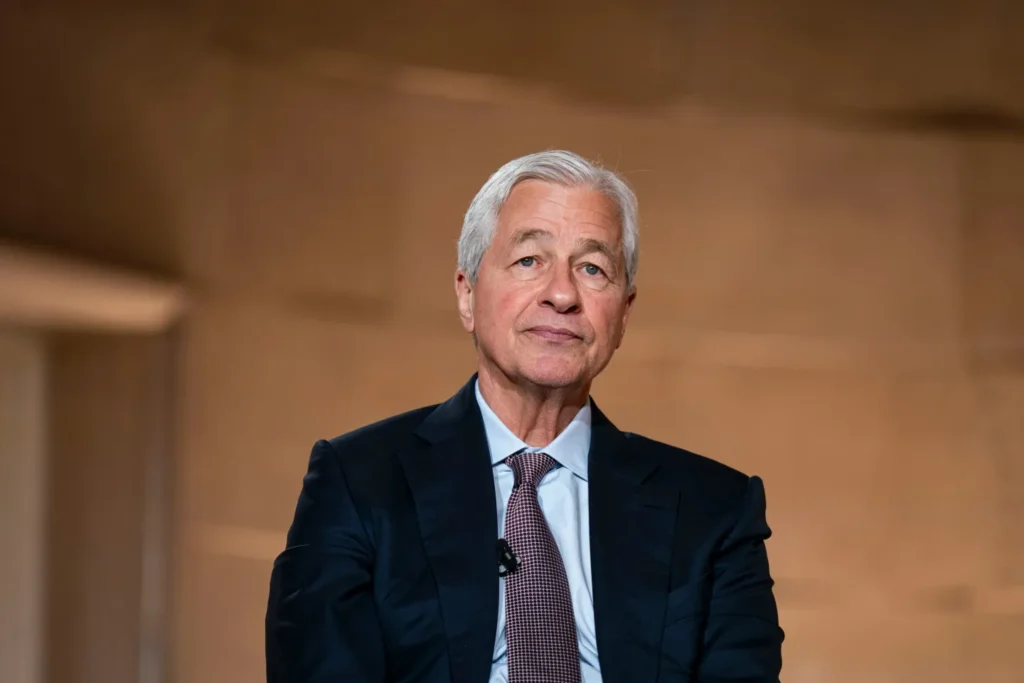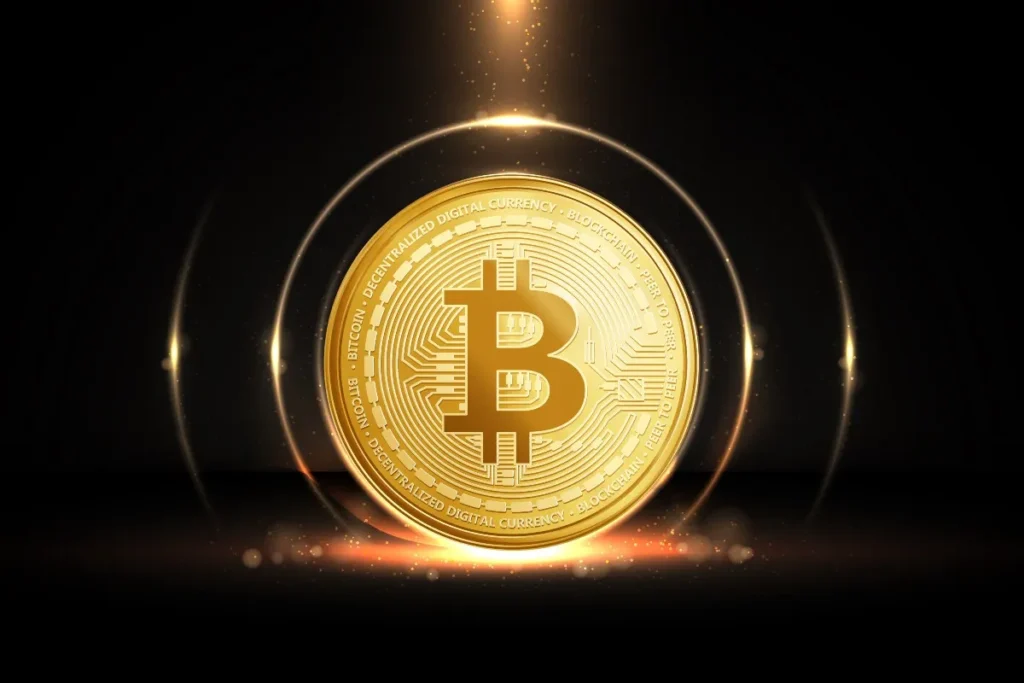Jamie Dimon Backs Stablecoin and Bitcoin Gets Snubbed Again
In the latest chapter of JPMorgan’s evolving relationship with digital assets, CEO Jamie Dimon has once again drawn a sharp line between stablecoin and Bitcoin. And to no one’s surprise, he’s made it crystal clear which side he’s on.
During a recent panel appearance, Dimon stated his position with trademark bluntness: stablecoins, he says, are real, useful, and have a future—while Bitcoin continues to be “a fraud” in his eyes. His remarks, as reported by Coinpedia, come at a time when the crypto space is more divided than ever, and traditional finance is cautiously dipping its toes in the blockchain pool.

Credit from : Fortune
Stablecoin and Bitcoin Aren’t the Same—At Least Not to Wall Street
Let’s be honest—if you’re outside the crypto bubble, it’s easy to lump everything under the term “crypto.” But for Dimon, there’s a major difference between a dollar-pegged stablecoin and a decentralized asset like Bitcoin.
According to Fortune, Dimon acknowledged that stablecoins, when backed 1:1 by real fiat currency and managed within a strong regulatory framework, are “not that different from a money market fund.” In his view, they can offer faster, cheaper payments—especially for global banking and settlements.
JPMorgan even has its own token, JPM Coin, which the bank uses internally to move billions across its network every day.
But Bitcoin? That’s a different animal. And Dimon’s position hasn’t budged. He’s still skeptical, still wary, and still sees it as something between a speculation tool and a danger zone.

Credit from : Visa
The Real Reason Stablecoin Gets a Pass
Why is JPMorgan okay with stablecoins but not Bitcoin? Control.
With stablecoins—particularly those regulated by governments or issued by banks—there’s a level of oversight and stability that big institutions crave. The assets are trackable, the issuers are accountable, and the entire system can be plugged into existing banking infrastructure.
In contrast, Bitcoin is decentralized, borderless, and famously hard to regulate.
As Yahoo Finance points out, Dimon didn’t just stop at dismissing Bitcoin’s value. He actively questioned its purpose: “Why would I use Bitcoin when I could use something that’s faster, cheaper, and backed by a dollar?”
It’s a rhetorical question, but it cuts to the core of the divide. Stablecoins fit into the banking world. Bitcoin, by design, doesn’t.

Credit from : Bridge Michigan
Can You Really Separate Stablecoin and Bitcoin Forever?
Here’s where things get messy.
Yes, from a regulatory and institutional point of view, stablecoins are more acceptable. But in practice, both stablecoin and Bitcoin are often used within the same platforms, wallets, and ecosystems.
For example, traders routinely convert between Bitcoin and stablecoins like USDC or USDT to hedge against volatility. Payment providers are experimenting with both. And DeFi (decentralized finance) protocols blend the two constantly.
So, while Dimon’s stance may work in a boardroom, it gets fuzzier on the ground. And crypto-native users see the two as complementary, not opposing forces.
That said, when banks like JPMorgan set policy or shape strategy, they usually aren’t thinking about crypto-native use cases. They’re thinking about regulation, risk, and reputation.

Credit from : Corporate Finance Institute
Bitcoin Still Isn’t Going Away
Let’s not get it twisted—just because Jamie Dimon dislikes Bitcoin doesn’t mean it’s disappearing.
Quite the opposite, actually.
In 2025, Bitcoin has become more institutional than ever. Spot ETFs are drawing in capital. Major hedge funds are holding BTC on their balance sheets. And countries like El Salvador and even smaller economies in Asia and Africa continue to experiment with Bitcoin adoption.

Credit from : Afar
Is it volatile? Yes. Is it controversial? Absolutely.
But it’s also proving to be remarkably resilient.
And that’s probably why Dimon keeps talking about it—because even if he wishes Bitcoin were irrelevant, it clearly isn’t.
What This Means for the Crypto Industry
Dimon’s comments reflect a broader divide in how traditional finance views crypto.
Banks are starting to embrace blockchain tech, tokenized assets, and stablecoins—but they’re still hesitant when it comes to decentralized, uncontrolled coins like Bitcoin.
That means more institutional money might flow into stablecoins and asset-backed tokens, while Bitcoin remains on the fringe—or at least, outside the official banking system.
It’s not a full-on rejection. It’s more of a strategic avoidance. And for now, it seems to be working for JPMorgan.
But it’s worth asking—what happens if stablecoins run into regulatory trouble? Or if Bitcoin becomes even more mainstream?
At some point, banks may have to reckon with the fact that you can’t separate stablecoin and Bitcoin quite as neatly as they’d like.
Final Thoughts: Stablecoin and Bitcoin—One Welcome, One Watched
In the end, Dimon’s comments aren’t surprising. They’re consistent, calculated, and probably aligned with how most big banks think.
Stablecoins get a cautious green light. Bitcoin stays on the outside.
But the industry isn’t static. Lines blur. Opinions evolve.
And while Dimon might still be skeptical, crypto’s story is far from finished.
Stablecoin and Bitcoin may seem like rivals now—but in the messy, unpredictable world of digital finance, they may have to coexist whether Wall Street likes it or not.




